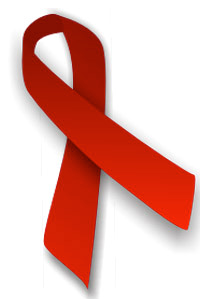
About 36.7 million people around the world – about 1.1 million in the U.S.- are living with an HIV (human immunodeficiency virus) diagnosis, making it one of the most enduring pandemics on the planet. HIV is the virus that causes acquired immune deficiency syndrome (AIDS). Since the virus was first discovered in the 1980s, about 35 million people have died from complications of AIDS.
There has been much progress in terms of treatment. There are now 30 antiretroviral drugs available for those diagnosed with HIV, writes Anthony S. Fauci, M.D., director of the National Institute of Allergy and Infectious Disease, in the JAMA Network. The drugs are so effective that the average lifespan of those living in the North America and Europe is 73 for men and 76 for women. And there is now a drug, Truvada, that has been found to prevent HIV infection in people vulnerable to the virus, through a protocol called pre-exposure prophylaxis (PrEP).
But there is still no cure for the virus and antiretroviral therapy isn’t cheap. For those with HIV, the monthly cost can be as much as $4,200 a month. Truvada, the only drug now approved to prevent HIV acquisition, costs about $1,300 a month in the US. The cost has meant that globally, more than 17 million people living with HIV, aren’t getting treatment, and people are still acquiring the virus. In 2016, 1.8 million people received an HIV diagnosis worldwide. In the U.S., about 37,600 people receive an HIV diagnosis a year, according to the CDC. In the U.S., young African Americans in the South are particularly vulnerable to acquiring HIV due to overlapping issues of poverty, poor access to health care in the community at large and other confounding factors.
Though Congress has so far been unable to appeal the Affordable Care Act, the law remains in jeopardy. If it is pared back or collapses, insurance for those covered under marketplace plans of Medicaid expansion could become unavailable. AIDS Drug Assistance Programs (ADAP) fill some of those gaps, but lack of access to health care in general could lead to later diagnoses, increased likelihood of transmitting the virus without knowing one is living with HIV and worsened outcomes, including mortality.
 The uncertainty around the ACA and the prevalence of this disease is why writing about HIV remains an important priority for health reporters. Heather Boerner, a freelance writer who has been covering HIV issues since 2011, has written a tip sheet outlining resources for getting up to speed on covering HIV and how to localize the story. She also provides important advice on how to be sensitive when reporting and writing stories on HIV and to remember that the social determinants of health are key to understanding the virus and how it impacts communities.
The uncertainty around the ACA and the prevalence of this disease is why writing about HIV remains an important priority for health reporters. Heather Boerner, a freelance writer who has been covering HIV issues since 2011, has written a tip sheet outlining resources for getting up to speed on covering HIV and how to localize the story. She also provides important advice on how to be sensitive when reporting and writing stories on HIV and to remember that the social determinants of health are key to understanding the virus and how it impacts communities.
For further reading, see Boerner’s tip sheets:
Also:
- An HIV Vaccine is Essential for Ending the HIV/AIDS Pandemic
- Pelosi: Trump Budget Would Hurt People with HIV/AIDS
- On Track But Continued Progress on Needed on HIV Viral Suppression to Achieve Our Nation’s Goal
- America’s Hidden HIV Epidemic
- Guidelines for the Use of Antiretroviral Agents in Adults and Adolescents Living With HIV








